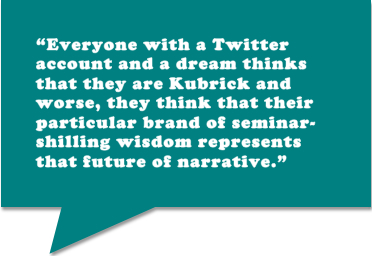I have a very embarrassing confession, especially as a former business professor. Three alliterative business concepts — strategy, sustainability, and scalability — elude my total comprehension. I basically understand the concepts on a rudimentary level, but I have not completely wrapped my head around them. If you asked me to explain them, I could not do so in any truly articulate way. And they are not easy concepts to explain; for example, see if you can draw a picture that explains “strategy.” When I searched for graphics to accompany this post, most of the images that came up showed chess games. Yeah, chess requires strategy, but does a picture of a chess game explain strategy?
But two recent blog posts have boosted my understanding of strategy by tying it to story.
The first is posted on Ben’s Blog by Ben Horowitz, cofounder and general partner (along with Marc Andreessen) of the venture-capital firm Andreessen Horowitz. In this piece about how Andreessen Horowitz evaluates CEOs, Horowitz states that “in good companies, the story and the strategy are the same thing. As a result, the proper output of all the strategic work is the story.” Here’s more, including the CEO’s role in the storied strategy:
The CEO must set the context that every employee operates within. This context gives meaning to the specific work that people do, aligns interests, enables decision-making and provides motivation. Well-structured goals and objectives contribute to the context, but they do not provide the whole story. More to the point, goals and objectives are not the story. The story of the company goes beyond quarterly or annual goals and gets to the hardcore question of why? Why should I join this company? Why should I be excited to work here? Why should I buy your product? Why should I invest in the company? Why is the world better off as a result of this company’s existence?
When a company clearly articulates its story, the context for everyone–employees, partners, customers, investors, and the press–becomes clear: When a company fails to tell its story, you hear phrases like:
- “These reporters don’t get it.”
- “Who is responsible for the strategy in this company?”
- “We have great technology, but need marketing help.”
Toward the end of the section on strategy (Horowitz goes on to discuss decision-making, getting the company to execute, and measuring results against objectives), the writer makes the startling statement in the headline of this post.
Commenter “Deckerton” notes that storytelling, which he/she characterizes as “setting context in emotionally and intellectually compelling ways,” is a skill that is rarely taught. (Which is why I wish I were still teaching).
Examples of strategy as story? Horowitz offers the first one on this list, while commenters to the post suggested additional examples:
- Jeff Bezos’ 3-page letter to Amazon shareholders in 1997
- Steve Jobs talking about Apple’s story (video)
- A collection of Warren Buffet’s letters to Berkshire Hathaway shareholders
Commenter Scott Allison also suggests the storied exercise in this blog post.
Which leads to the second blog post that elucidated strategy for me. In Moving From Strategic Planning to Story Telling by Roger Martin, dean of the Rotman School of Management at the University of Toronto, Martin suggests “think[ing] about a strategic options as being just a happy story about the future.” Further:
When you have assembled the happy stories/options, you can then begin to deploy the most important question in strategy: what would have to be true? For each individual story, what would have to be true for it to be a terrific choice? Work backward from an attractive possibility to see what would have to be true to make this a feasible and attractive option.
That is the dead-easy way to produce great strategies.
Now, those are some approaches to strategy I can wrap my feeble brain around.








